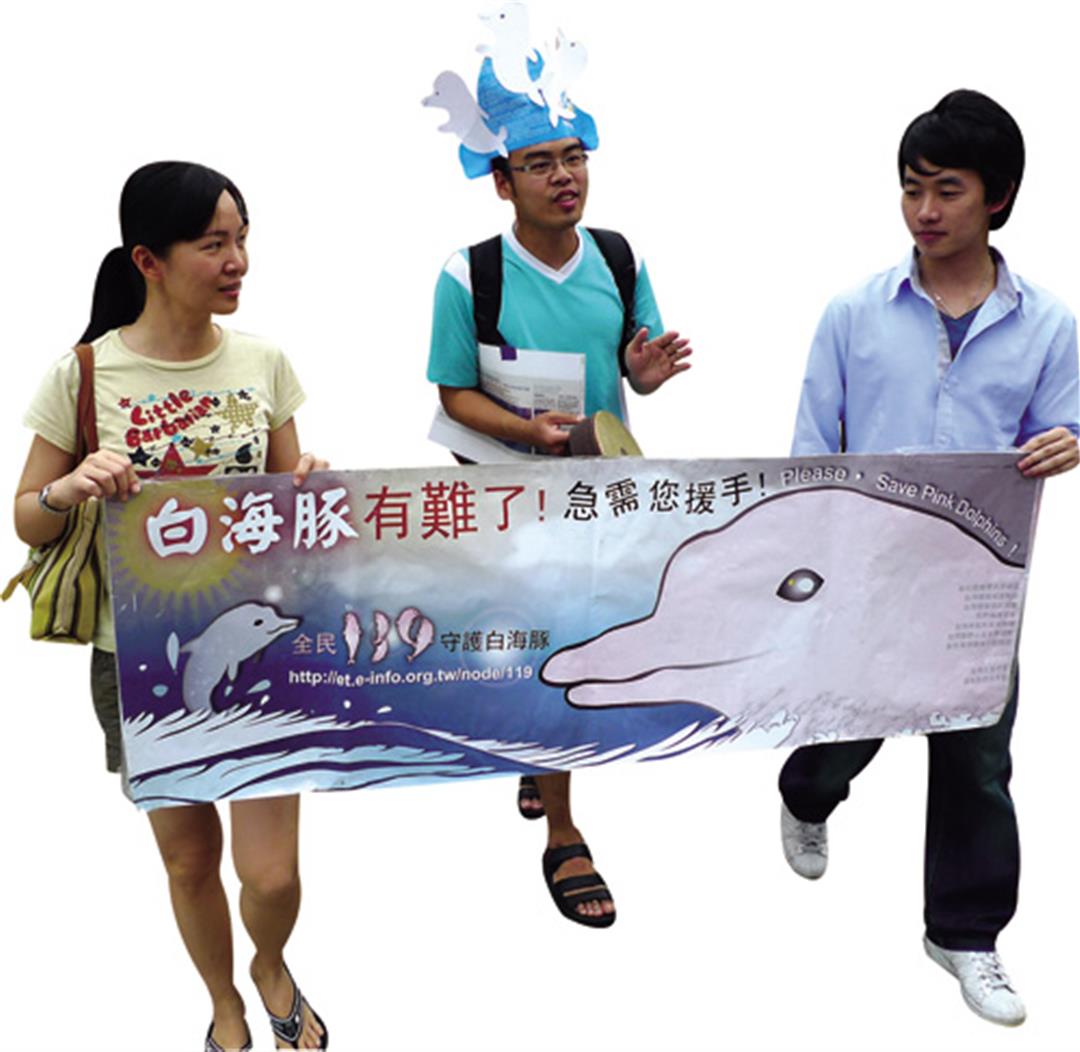35,000 voices
According to Tsai, a petrochemical environmental impact assessment by the Taiwan Research Institute on behalf of the Industrial Development Bureau shows that Taiwan is 90% self-sufficient in petrochemical products; therefore the new industrial zone would profit mainly through exports, leaving massive water and air pollution in Taiwan. Besides this, Kuokuang's projected water consumption of 400,000 tons a day is more than Changhua's residential and agricultural consumption combined; to address this, the government is planning to build the Dadu Diversion Weir, digging a 66-km channel to carry water from north to south Changhua. This would exacerbate water shortage problems in central Taiwan, causing streams to dry up and worsening dust storms. The need for it is questionable.
Since it would take the astronomical sum of NT$2.4 billion to buy 2,000 hectares (one hectare is 10,000 square meters, thus NT$120/m2 x 20 million m2 = NT$2.4 billion), they plan first to buy a 200-hectare tidal flat within the Kuokuang industrial zone and harbor area. This strip of land lies beside the north-south migration corridor for the humpback dolphin, plus it can cut through the land needed by Kuokuang Petrochemical. Then in the second and third stages, they plan to raise money to buy 1,800 hectares around the periphery.
"One share or 100 shares, anyone can be a landowner!" says Chen. In the first stage, it is estimated that they will need 2 million shares. As of July 7, they have come quite close to their goal, with 35,000 people pitching in, pooling over NT$180 million, or 1.5 million shares.
Tsai says that this national trust will follow Chapter 8 of the Trust Act. In the past, most charitable trusts were portions of an estate left to banks rather than next of kin after the death of a business owner. The banks then determined what charitable work the assets would support. But this is the first time in Taiwan that a natural setting or a cultural landscape has become the object of a charitable trust.
Some people have asked, "But what if the government refuses to sell the land to environmental groups?"
"In such a case, I'd ask the government why they wouldn't sell it," says Tsai. The fact that there are 35,000 people willing to donate their own money to support this cause means that this is a strong outpouring of public support that shouldn't be ignored. This trust case has now been submitted to the Ministry of the Interior, and the results will come out in a month's time.

In front of the Ximen Red House Theater, kids and grownups alike are working hard to give a voice to the humpback dolphin, canvassing passersby to take part in their efforts to buy coastal land to save these splendid marine animals.